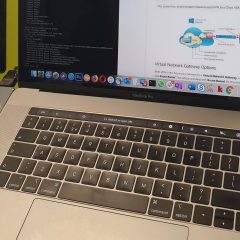VMware Converter Slow!
KB ID 0001584 Problem I was P2Ving a server for a client this week. I did a ‘trial run’ just to make sure everything would be OK, and got this; Yes, that says 13 days and 29 minutes! Suddenly doing this at 1700hrs on a Friday became a moot point! (Note: I was using VMware vCenter Converter Standalone version 6.2) Solution At first I assumed this was a network problem, so I moved everything onto the same Gigabit switch, and...
VMware Converter – Unable to Deploy Agent
KB ID 0001345 Problem I still think P2V conversions are cool, and I’ve been doing them since version 3! It seems though every time I try and do one with the standalone converter though I get this error; VMware vCenter Converter Standalone Unable to complete installation/uninstallation of converter agent on ‘{target}’ Solution I always spend five minutes messing with firewalls, checking remote registry services,...
VMware ESXi – Converting ‘Thick’ Provisioned Drives to ‘Thin’, and ‘Thin’ to ‘Thick’
KB ID 0000579 Problem Thin provisioning of hard drives is pretty cool stuff, full support for thin provisioning was brought in with vSphere version 4. Put simply a thin proviosioned drive is as big as it needs to be, and a thick provisioned drive is set to its maximum size when it’s created. The virtual machines that use these hard drives don’t know, and assume that their hard drive is a set size (even if it is thin...
VMware ESXi 5 – Applying Patches and Updates
(ESXi 5 Update 1 and Patches) KB ID 0000623 Problem When VMware released ESX 4.1, they took away the “Host update utility”, (which was a mistake!). For people without VMware Update Manager, you now have to either put in the CD/DVD and do an ‘in place upgrade’, or grow a ginger pony tail and put some socks/sandals on and do some Linux. Below I’ve got a build of ESX with no updates on it, I’m going to...
MAC OSX – Managing ESXi Hosts
KB ID 0001054 Problem I have made the transition to a MAC laptop pretty easily, but theres one thing thats still a pain, VMware ESXi servers! I know these days vCenter has a nice shiny web management portal, but ESXi does not. When I’m working on the test bench I usually connect using the VI client from a virtual machine running inside VMware fusion. Which works, but the performance is not brilliant, things wont move where I...



